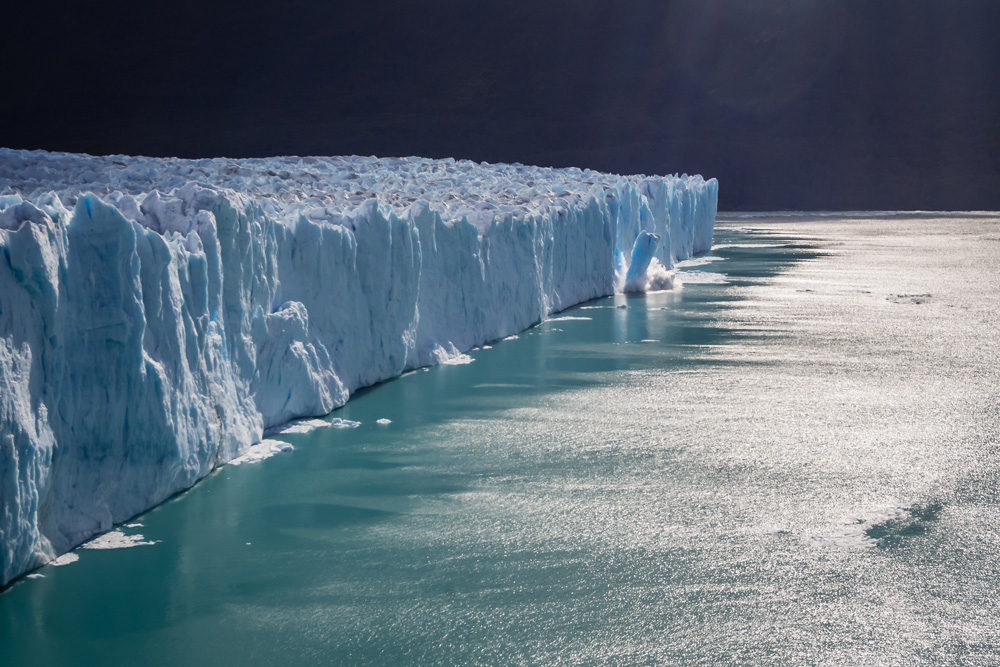
A team of scientists has released a video of a four-mile iceberg breaking away from a glacier in eastern Greenland, an event that highlights one of the forces behind the international rise in sea levels.
“Global sea level rise is both undeniable and consequential,” David Holland, a professor at the Courant Institute of Mathematics in New York University (NYU) and NYU Abu Dhabi, said. “By capturing how it unfolds, we can see, first-hand, its breath-taking significance,” the expert who led the research team adds.
The video shows sea levels rising as the iceberg from the glacier, broken off from Greenland’s Helheim Glacier, enters the ocean. Apparently, the iceberg is big enough to stretch from lower Manhattan up to Midtown in New York City.
This phenomenon, also known as calving (the breaking off of large blocks of ice from a glacier), may also be instructive to scientists and policy makers. “Knowing how and in what ways icebergs calve is important for simulations because they ultimately determine global sea level rise,” says Denise Holland, the logistics coordinator for NYU’s Environmental Fluid Dynamics Laboratory and NYU Abu Dhabi’s Center for Global Sea Level Change. Denise, who filmed the calving event, went on to explain that by better understanding what’s going on, they can create more accurate simulations to help predict and plan for climate change.

An illustrated overlay of the iceberg’s dimensions (Credit: Google Earth, Courtesy of Denise Holland).
The condensed 90-second video depicts a wide and flat iceberg calve off and move away from the glacier. As it does so, thin and tall icebergs -also known as pinnacle bergs- calve off and flip over. The camera angle then shifts to show movement further down the fjord, where one tabular iceberg crashes into a second, causing the first to split into two and flip over.
“The range of these different iceberg formation styles helps us build better computer models for simulating and modelling iceberg calving,” Denise says.
NYU’s Environmental Fluid Dynamics Laboratory and NYU Abu Dhabi’s Center for Global Sea Level Change, both directed by David Holland, is carrying out the research. The team is studying the forces behind sea level rise under a grant from the National Science Foundation. The study is centered on the Thwaites Glacier, a part of the Western Antarctic Ice Sheet. So far, the glacier has already drained a mass of water that is roughly the size of Great Britain or the state of Florida. It has accounted for approximately four percent of global sea level rise, an amount that has doubled since the mid-1990s.
Did You Know?
The rise in sea levels has concerned scientists in recent decades as it could mean the possibility of global disruptions due to climate change. Here are some facts and figures:
* Sea level rise is caused primarily by two factors related to global warming: the added water from melting ice sheets and glaciers and the expansion of seawater as it warms.
* A 2017 estimate suggested that a collapse of the entire Western Antarctic Ice Sheet would result in a 10-foot-rise in sea level, that’s enough to overwhelm coastal areas around the globe, including New York City.
* A newer study based on 25 years of NASA and European satellite data shows the rate of global sea level rise has been accelerating, rather than growing steadily, in recent decades. This increase of rate, caused mainly by increased melting in Greenland and Antarctica, could double the total sea level rise projected by 2100 when compared to forecasts that assume a fixed rate of sea level rise.



























